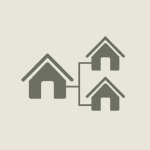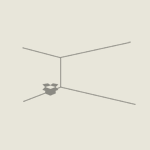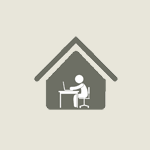
One house, two homes
Children living at home for longer, as well as older relatives coming to live, will lead to the rise of dual- and even tri-hub homes.
Read more

Living a la module
Prefabricated homes and self-build kits will become more common owing to their improved quality and the fact they offer greater flexibility with the ability to add extra 'modules' as needed.
Read more

Wellbeing
Homes will benefit from more natural light, natural materials, tech-free ‘zen’ rooms and sensory devices that monitor home health based on air quality, temperature consistency and interior noise levels.
Read more

Power house
Energy that previously would have been wasted can be recovered in a number of ways; heat, sunlight, pressure and movement can all be converted into electrical energy. It will even be possible for a home to generate more energy than it consumes.
Read more

Quantifiable comfort
With increasingly clever products and gadgets that speak to each other through The Internet of Things, your home will effectively run itself, by sensing whether the house is too hot or cold, if a pipe is leaking, a fire has started or a burglar has entered. Things like acoustic quality, reverberation times, and the amount of daylight will all be measurable and optimisable.
Read more

Transparency
Of all the building materials, glass has perhaps the greatest potential for innovation. As well as being a source of wellbeing through providing natural light, glass will become multifunctional. It’s already widely anticipated that glass windows will also become screens
Read more

Mandatory minimalism
Space constraints will lead to a highly practical need to de-clutter. Many of the items that used to clutter homes are gradually disappearing anyway; compact discs are replaced by MP3 files, DVDs by video on demand, alarm clocks by mobile phones, paperbacks by eBooks and Kindles, photo albums by hard drives and SD cards.
Read more

Control
Households will be able to lower the cost of running the home by being more efficient with heating and lighting, controlling them remotely where necessary. Sensors will report unusual variations in humidity, noise and smoke when the homeowner is away.
Read more

Materials
Designers are seeking to use more sympathetic materials to boost wellbeing including paint and soy glue. Norwegian architect firm Snohetta's ZEB house, for example, uses beeswax laminated aspen wood in the bedrooms – a wax that reacts with moisture in the air and helps to stabilise room temperature.
Read more

Homework
While we do not foresee a significant shift away from office environments towards homeworking, the report found that one in five Brits said they wanted to work from home. Whether from the dining table, bedroom desk, or even a bed in some cases, furniture will have to double-up as a workstation
Read more


